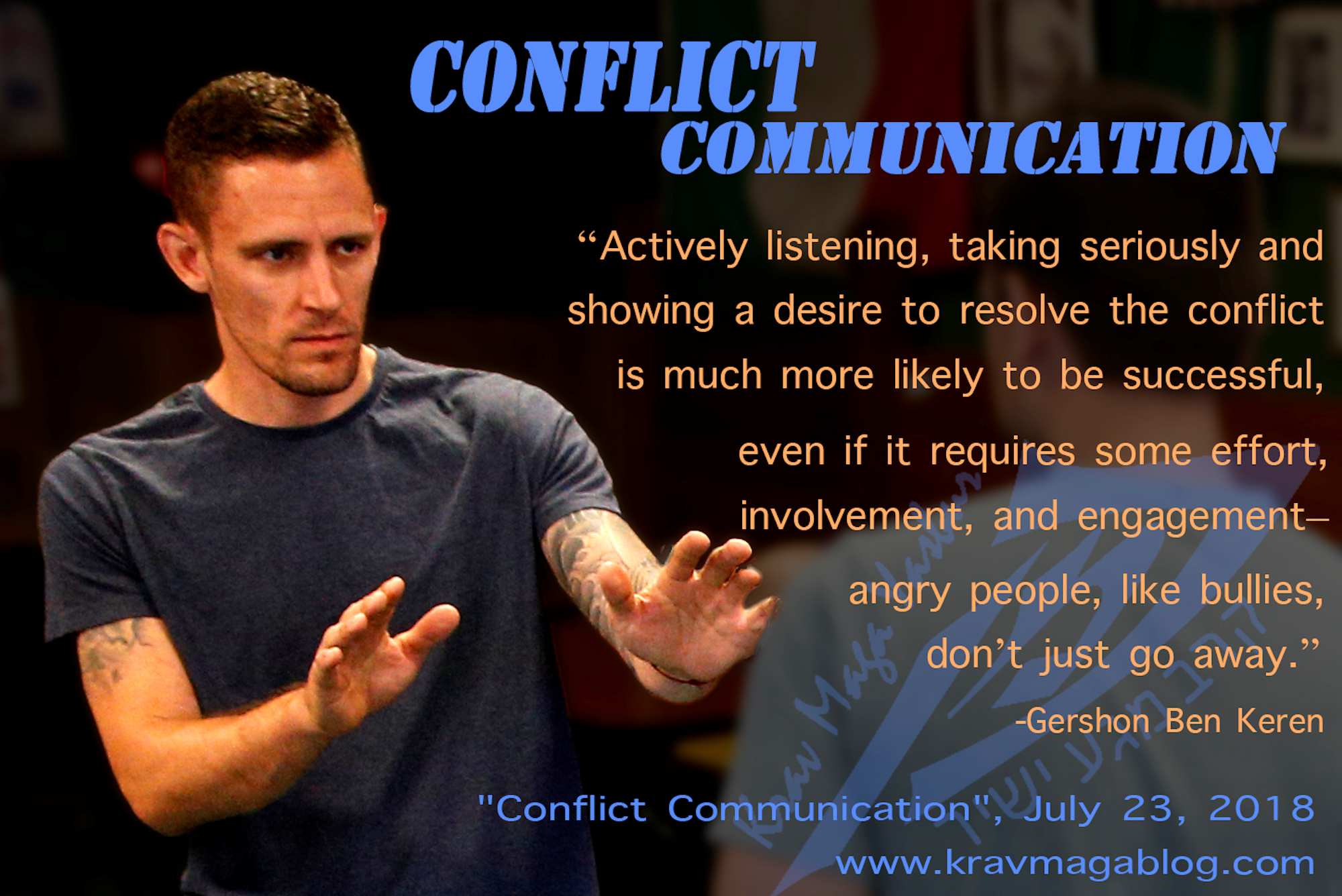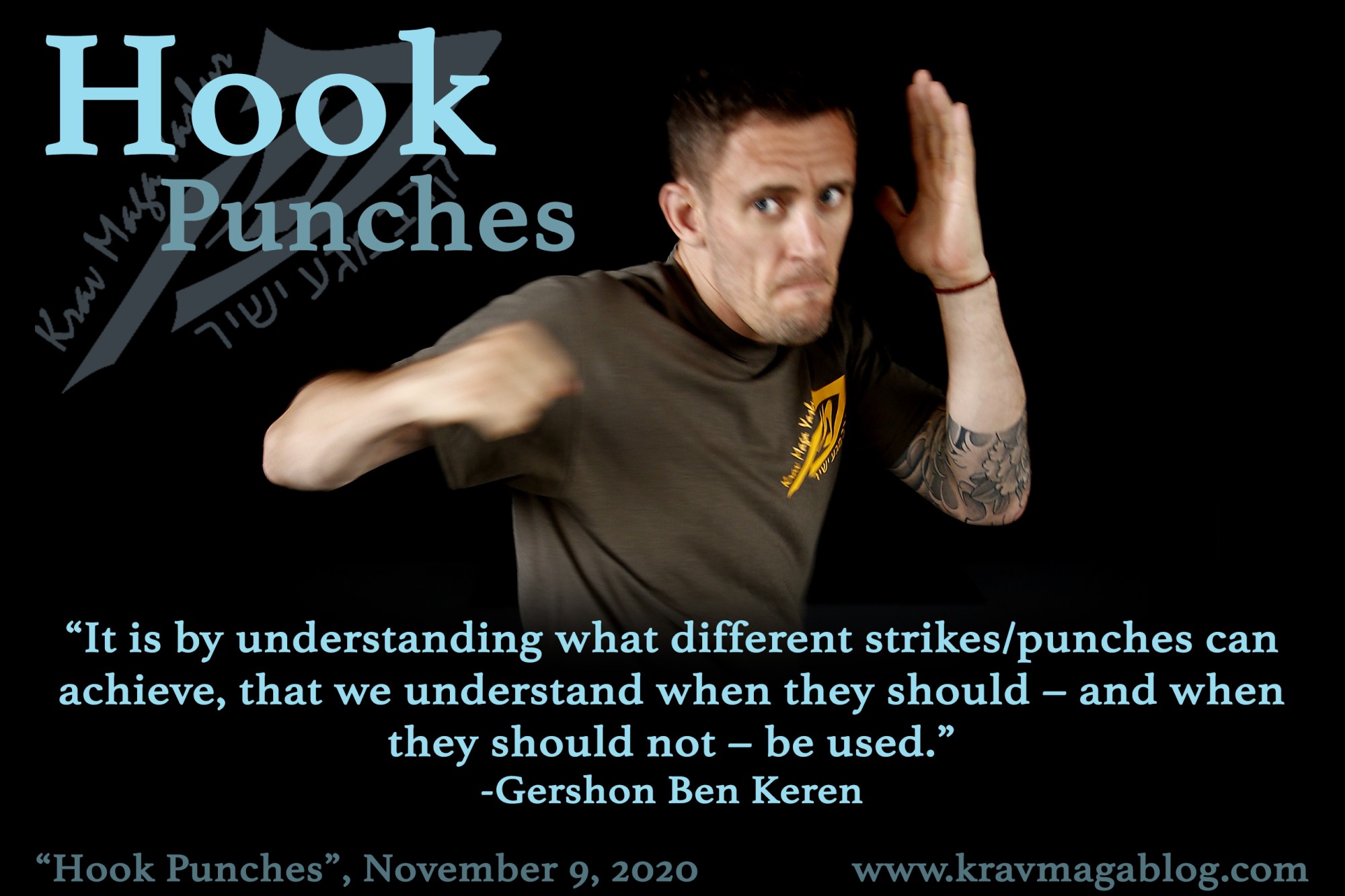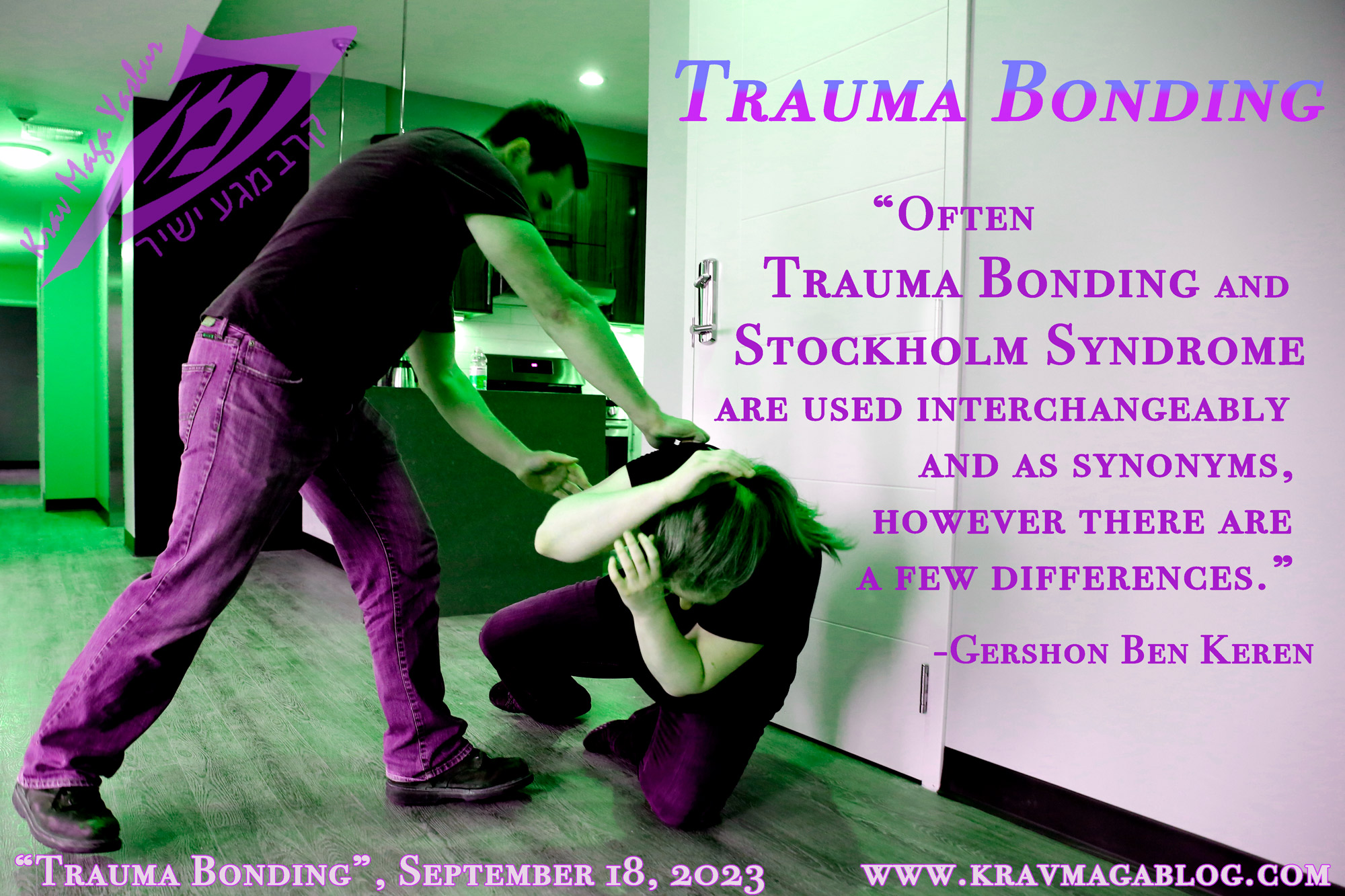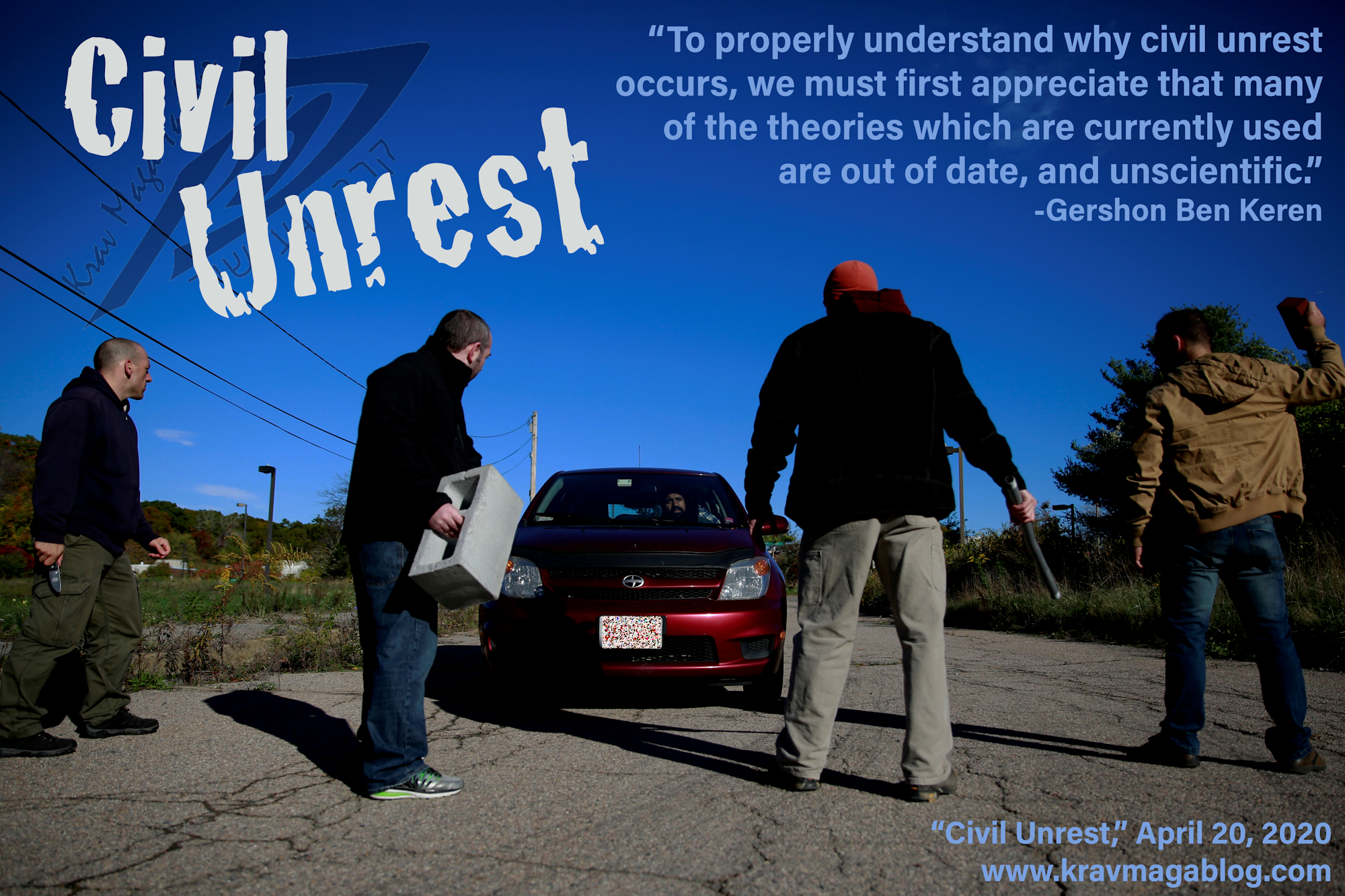Chokes & Strangulations, is an article written by Gershon Ben Keren, a 5th Degree Black Belt in Krav Maga, who teaches Krav Maga in Boston, MA. He has also authored three Amazon best-Selling Books on Krav Maga.
You should have more than one way to finish a fight. Whilst many fights can be decided by the use of concussive force i.e. punching/striking, there may be times when you face a pain tolerant/resistant attacker, who will continue on, regardless of the punishment you inflict upon them – most assailants will take themselves out of a fight (emotionally crumble) when faced with a barrage of punches, kicks, knees and elbows, but there are those who due to experience, adrenaline, drugs and/or alcohol, will react to these things as if you were flicking cocktail sticks at them. In a dynamic situation, relying on landing a “knockout” blow to shut somebody like this down is extremely risky, and more conclusive methods, such as chokes and strangulations, may need to be used. Professionally, I have had to deal with aggressors on PCP and other drugs, where strikes/punches and conventional control/restraint methods – applied by a team - were completely ineffective in subduing them i.e. they had to be choked out and rendered unconscious, to be stopped. This is not to say that all situations need to be concluded this way, but if you are relying solely on striking to end a confrontation, you may find yourself wanting when faced with a pain-resistant assailant; most people will want to take themselves out of a fight when they’ve received a few powerful strikes (giving you the opportunity to disengage), but there are those who won’t, and these individuals need to be mechanically shut down, in order for you to create a chance to exit.
Medically, the difference between a choke and a strangulation, is that one is an internal event, and the other is an external one i.e. strangulations occur when something is wrapped around the outside of the neck, constricting/restricting either airflow to the lungs, or blood to the carotid processes (not the brain), whilst a choke is an internal restriction - in the throat – that prevents air getting to the lungs, etc. Unfortunately, this distinction doesn’t help us understand the different types of “chokes”, and their effects from a fighting/combative perspective. I use the term, “strangulation” to refer to a choke/strangulation hold that prevents air being received by the lungs and, “choke” to signify a constriction of the carotid arteries, that prevents blood being received by the carotid processes. If others want to swap these around and argue that these should be reversed, etc., it really doesn’t matter to me; as long as the use of terminology is consistent, then the necessary information can be conveyed.
Blood chokes are quicker to apply than strangulations i.e. air chokes. In a strangulation, where air/oxygen is prevented from getting to the lungs by a constriction of the airway, the individual being strangled still has oxygen in their lungs, and their brain has oxygenated blood – all of this will have to be used up before they are rendered unconscious; a process that may take 30 seconds or longer – I remember reading a case where it took a husband nearly 5 minutes to subdue his way wife this way (before killing her), due to the difficulties of fully blocking the airway. Blood chokes, by contrast, can shut off cognitive processing almost immediately, and when applied correctly, shut somebody fully down in a matter of seconds. This occurs not by shutting off blood supply – and oxygen – to the brain, but by causing the brain to “flush” itself of oxygenated blood. There are two major sets of arteries that supply blood (and oxygen) to the brain - the Carotid and Vertebral arteries – so if one set were to be simply constricted, the brain would still receive blood/oxygen from the other. However, when the Carotid arteries are closed/restricted, the Carotid processes, which monitor blood pressure in the brain, take this as an indication that there is an over-pressure of blood in the brain, and as a safety measure, causes it to flush blood out – due to the subsequent lack of oxygen, a “shutdown” starts to immediately occur. This is why the effects of a blood choke are experienced so quickly, and there isn’t a process by which somebody can override it i.e. it will work against the most pain-resistant attacker.
Despite the mechanism by which all blood chokes function in the same way, different methods of constricting the Carotid arteries can have different effects and consequences. Applying pressure using the arms, rather than the person’s clothing, puts four times more pressure on the neck and throat. This pressure can cause the windpipe to swell, and/or damage to the cartilage of the throat, that in turn can lead to breathing difficulties i.e. although the intent is to cause pressure to the arteries, a secondary and unintended effect can be to prevent or restrict oxygen getting to the lungs. This is one of the reasons I favor the use of clothing when applying chokes; I can render a person unconscious without causing possible secondary issues, such as having/leaving them unable to breathe, which may result in legal issues later, etc. The primary reason though for selecting clothing as the means to choke somebody out, is that it is usually quicker i.e. it cuts into the arteries, as opposed to just putting pressure on them (using my arms). Oftentimes, I will use either strangulations, and/or chokes with the arms to transition into clothing chokes, as it’s generally easier to get into an effective position this way, rather than going straight for the clothing; which may be hard to initially access/grab – but with the goal of using the clothing to complete the choke.
Our goal should be to equip ourselves with the necessary tools to do every job that we may be faced with. We should recognize that going into a situation relying on a single approach, such as dealing with every encounter using striking/punching, may see us coming up short when our sole reliance is on this solution. Sometimes it is worth imagining/considering our worst nightmare e.g. the 280-pound, drug dealer who doesn’t care about any moral/legal consequences, and has faced far more competent – and deadly – adversaries than ourselves, etc. If we think that our ability to deliver pain/concussive force is going to have an impact and stop them in their tracks, then we may find ourselves mistaken and ultimately overwhelmed. There is a benefit to allowing for the possibility that our worst nightmare may be there person we are confronted with, and consider whether our striking/punching is liable to overwhelm them, or whether we might need some different tools in our toolboxes, such as shutting them down with a choke, rather than relying on striking and concussive force to stop them.
0 COMMENTS
















